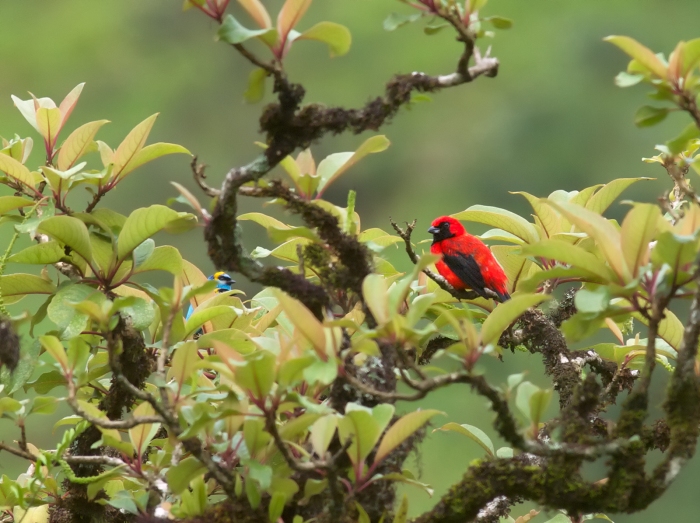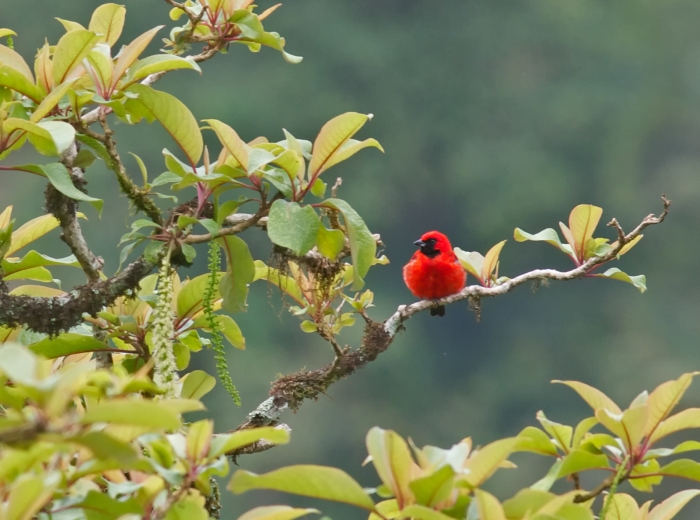Return of Bird of the Week: Vermilion Tanager
Not to be confused with the similarly colored but unrelated Vermilion Flycatcher, the Vermilion Tanager is a bird of the eastern slopes of the Andes. It’s another canopy species; this is another photo from a steep hillside, looking at downslope treetops.

Vermillion Tanager, Podocarpus National Park, Ecuador
Yes, the shot was photobombed by a Golden-naped Tanager, but that’s a pretty good bird, so WC let it pass.

Vermillion Tanager, Podocarpus National Park, Ecuador
The bird was pretty far away, the crop is pretty heavy and both photos demonstrate a hazard of birding in a cloud forest: clouds. Still, it doesn’t get much more red than that. Unusually for a tanager, this species is the only member of its genus Calochaetes.
The amazing bright red and black plumage resembles a breeding male Scarlet Tanager in having a scarlet red body and black wings and tail, but differs by having a black mask and bib. It also somewhat resembles an arboreal version of Masked Crimson Tanager, but lacks the black back and belly of that species. Vermilion Tanager typically occurs in small groups of 2-5 individuals in the canopy, and almost always is associated with other tanagers in mixed species flocks.
Vermilion Tanager is resident in the countries of Colombia, Ecuador, and Peru, where it occupies cloud forests along the eastern slope of the Andes Mountains. It feeds mostly on insects, foraging in the mosses and epiphytes on branches in the canopy. Fruits are a lesser component of its diet.
The sexes are slightly different; reportedly, the blacks in females are duller. Good luck seeing that in the cloudy, gray light of the cloud forest.
The species is uncommon, even in places like Podocarpus National Park. Its wide distribution suggests it isn’t under immediate threat, but there’s almost no data on populations or breeding. Like many Neotropic canopy species, it is poorly studied and little known. For example, no information is available on age at first breeding, life span, survivorship, parasitism, or population regulation.
For more bird photos, please visit Frozen Feather Images.